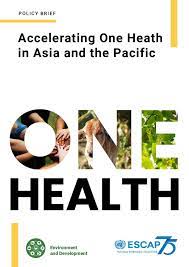What is your definition of One health?
Introduction to One Health concept
Welcome to the fascinating world of One Health, where human health, animal well-being, and environmental sustainability converge in a harmonious dance of interconnectedness. Join us on a journey to unravel the origins, significance, and challenges of this innovative approach that is shaping the future of healthcare for all living beings on our planet. Let’s explore how embracing the One Health concept can lead us towards a healthier and more sustainable future for generations to come!
The origin and evolution of One Health
The concept of One Health has its roots in the recognition that human, animal, and environmental health are interconnected. It emerged as a response to the need for a more holistic approach to addressing health challenges facing our world.
One Health evolved from various disciplines coming together to understand and tackle complex health issues at the intersection of humans, animals, and environments. The idea gained momentum as experts realized the profound impact these interconnected systems have on each other’s well-being.
Over time, One Health has become increasingly recognized as a vital framework for promoting overall health and sustainability. By considering all aspects of health in an integrated manner, this approach offers innovative solutions that benefit not just one species but entire ecosystems.
As we continue to witness the interplay between human activities, animal populations, and ecological factors on global health outcomes, embracing the principles of One Health becomes more crucial than ever before.
The importance of a holistic approach to health
When it comes to health, taking a holistic approach is key. It means looking at the bigger picture and understanding that human, animal, and environmental health are interconnected. By addressing all these factors together, we can create a healthier world for everyone.
This approach recognizes that diseases don’t exist in isolation; they can impact multiple species and ecosystems. By considering the well-being of humans, animals, and the environment simultaneously, we can prevent outbreaks and promote overall well-being.
A holistic perspective also encourages collaboration between different sectors like healthcare, veterinary medicine, agriculture, and environmental science. This interdisciplinary effort is crucial in tackling complex health challenges such as zoonotic diseases or antibiotic resistance.
Embracing a holistic approach to health allows us to achieve better outcomes for individuals, communities, and the planet as a whole.
How One Health addresses interconnectivity between human, animal, and environmental health
The concept of One Health recognizes the intricate web that connects the health of humans, animals, and the environment. It acknowledges that these three aspects are interdependent, with each one significantly impacting the others. When we consider human health in isolation from animal or environmental health, we overlook crucial factors that can affect our well-being.
By taking a holistic approach through One Health, we aim to address issues such as zoonotic diseases (those transmitted between animals and humans), antibiotic resistance due to overuse in both medical treatment and agriculture, and environmental degradation caused by unsustainable practices. Through collaborative efforts across disciplines, stakeholders can work together to find sustainable solutions that benefit all components of this interconnected system.
This integrated approach not only promotes better health outcomes but also fosters a more balanced relationship between humans, animals, and the environment. By recognizing their interconnectedness within One Health initiatives, we can strive towards a healthier future for all living beings on our planet.
Examples of successful One Health initiatives
In recent years, One Health initiatives have gained momentum globally as a way to address complex health challenges through interdisciplinary collaboration. One successful example is the “One Health Bangladesh” project, which focuses on combating zoonotic diseases by integrating human and animal health surveillance systems. This initiative has led to early detection of outbreaks and improved coordination between health sectors.
Another inspiring case is the “PREDICT” program, implemented in over 30 countries to identify emerging infectious diseases at the human-animal interface. By enhancing wildlife monitoring and disease surveillance, PREDICT has played a crucial role in preventing pandemics before they escalate. Additionally, projects like the EcoHealth Alliance’s research on bat-borne viruses highlight the interconnected nature of health across species.
These examples demonstrate how embracing a holistic approach can lead to innovative solutions that benefit both public health and ecosystem conservation efforts.
Challenges and limitations of implementing One Health
Embracing the One Health concept comes with its share of challenges and limitations. One major obstacle is the need for multidisciplinary collaboration among professionals from various fields, which can be complex to coordinate. Additionally, limited funding and resources allocated specifically for One Health initiatives pose a barrier to effective implementation.
Another challenge lies in changing established practices and mindsets within traditional healthcare systems that often operate in silos. Encouraging cooperation between human health providers, veterinarians, environmental scientists, policymakers, and communities requires overcoming resistance to new approaches.
Furthermore, addressing cultural differences and varying levels of awareness about interconnected health issues can hinder progress towards achieving comprehensive One Health goals. Sustaining long-term commitment and engagement from all stakeholders is crucial but not always easy to maintain amidst competing priorities.
The role of individuals in promoting the One Health concept
Individuals play a crucial role in promoting the One Health concept by being mindful of their actions and choices. By adopting sustainable practices, such as reducing waste and supporting local farmers, individuals can contribute to a healthier environment that benefits both humans and animals. Additionally, raising awareness about the interconnectedness of human, animal, and environmental health is key to fostering a culture of collaboration and shared responsibility.
Educating oneself about zoonotic diseases and advocating for responsible pet ownership are also ways individuals can actively support the One Health approach. Participating in community clean-up events or volunteering at wildlife conservation organizations further demonstrates a commitment to preserving biodiversity and safeguarding overall well-being.
By embracing individual responsibility towards promoting harmony between humans, animals, and the environment, each person becomes an integral part of advancing the One Health movement.
Conclusion: Embracing a One Health mindset for a healthier future
In a world where human, animal, and environmental health are intricately interconnected, embracing the One Health concept is crucial for creating a healthier future. By recognizing the interdependence of these three domains and promoting collaboration across disciplines, we can address complex global health challenges more effectively.
As individuals, we play a significant role in advocating for and practicing Health principles in our daily lives. Whether it’s supporting sustainable agriculture practices, advocating for wildlife conservation, or promoting responsible antibiotic use, every action we take can contribute to the well-being of all living beings on Earth.
By fostering a mindset that values the health of humans, animals, and the environment equally, we can work towards building a more resilient and sustainable world. Let us embrace the One Health approach as a guiding principle for shaping a healthier future for generations to come.




